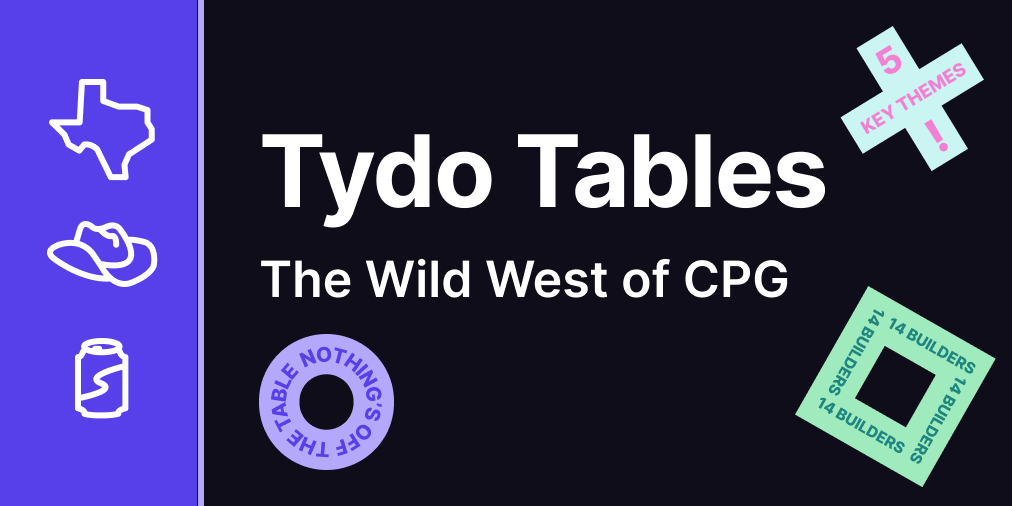
Austin is one of the nation’s CPG hubs, a thriving ecosystem for innovative consumer-product retailers and startups. So when Tydo wanted to find out the top questions challenges and opportunities affecting CPG brands, Austin was the ideal destination.
Tydo gathered the founders and operators of 14 Austin-based food and beverage brands including those already in the market as well as those launching later this year. Out of these roundtable conversations, Tydo created The Wild West of CPG, a 15-page free report
“Brands can listen to as many webinars, join as many Slack communities, and engage with as many tweets as they’d like, but nothing beats IRL collaboration, creativity, and conversation,” said Rachel Cantor, Brand and Content Marketing Lead at Tydo. “That’s why we created Tydo Tables. It’s this unique opportunity to gather founders and operators who are struggling with, thinking about, and innovating on the same things. It’s a magical space and community.”
Some of the key insights from Wild West of CPG gathering include:
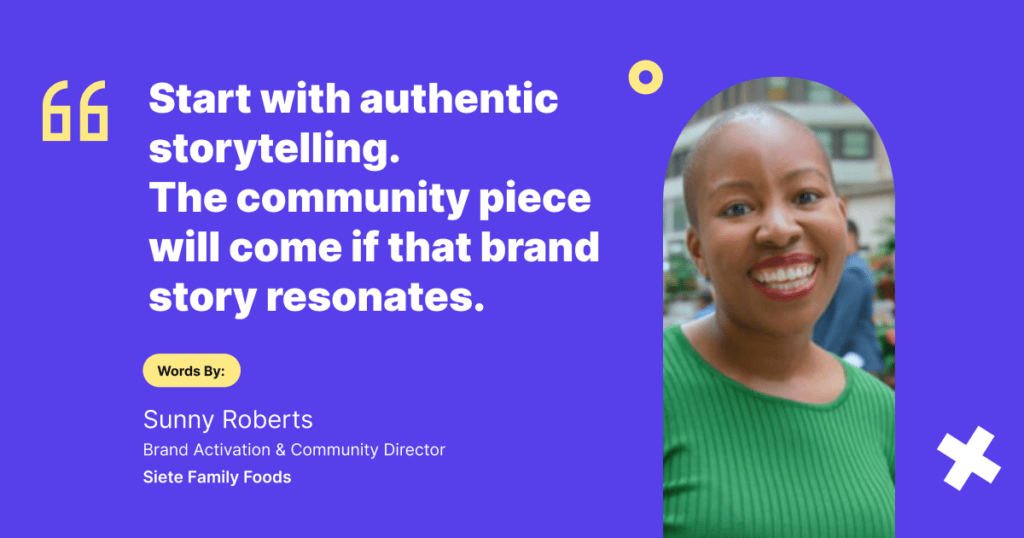
- Product and community go in hand. First, create a strong product. Then, tell an exceptional brand story. Ilene Chen, founder of Power Up Foods, believes authentic storytelling can help build community. She explains, “We try to be as authentic as possible, sharing the ups and downs of our growth with our PUFs family to give them an inside peek into the business. We like to connect with our PUF’s community as directly as we can—with our customers on video calls to say hello and to get feedback and with our local Austin community at events and markets.”
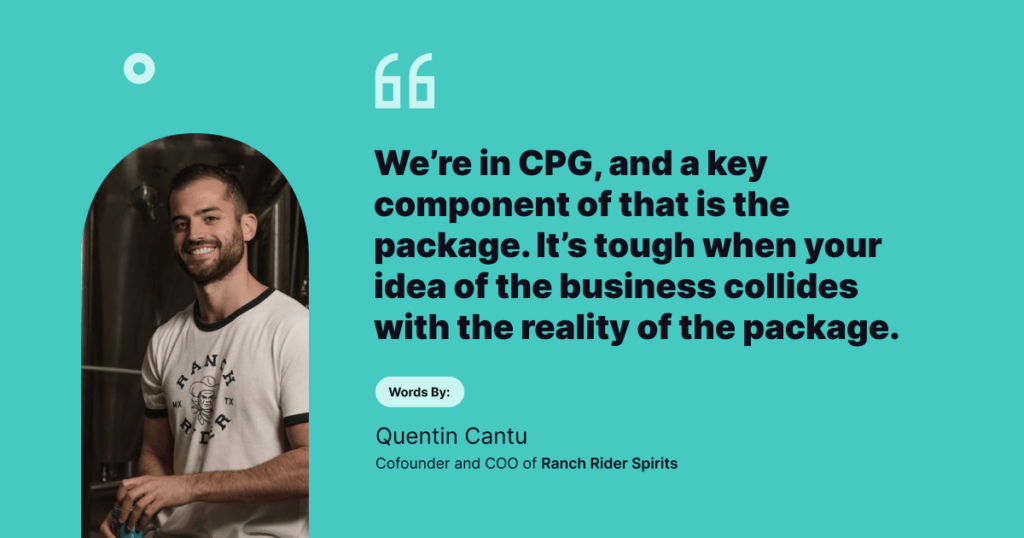
- Sustainability is often times at odds with CPG. Most brands focus on sustainable packaging, but there are many ways to differentiate and innovate. “CPG brands can also differentiate not just by their packaging but by their product and their operations. Above all, brands need to be smart about choosing practical, feasible, and fruitful sustainability goals.” – Neshat Soofi, president of JIT Experts Hive.
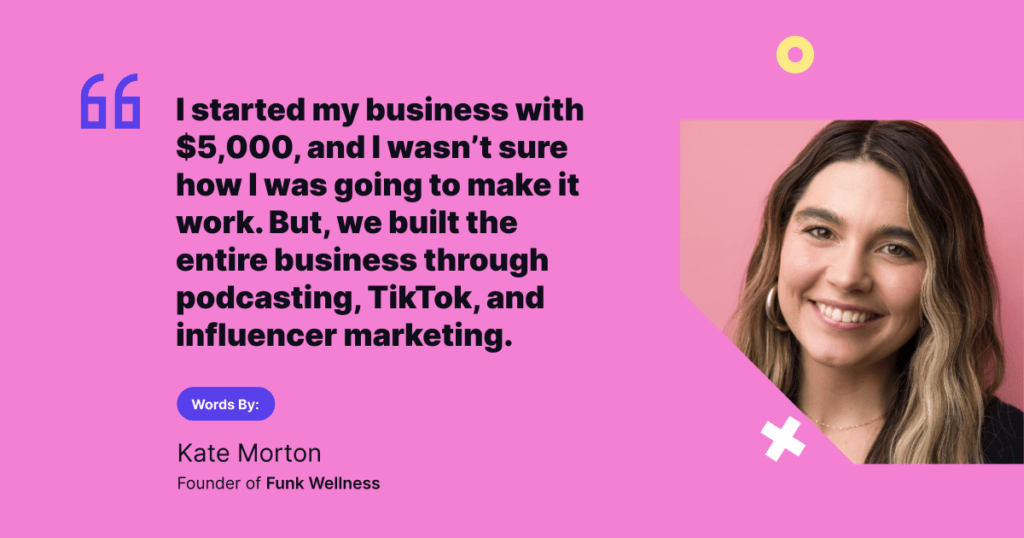
- TikTok and Web3 are the next frontier for CPG brands. Food and beverage brands are leveraging new ways and channels to cut through the noise. These channels provide unique opportunities to connect with customers and build community. It’s Skinny has a whopping 17.1K TikTok followers, harnessing the platform’s short-form video format and viral sounds. Leaning into the fitness culture around the brand and the “nine calorie noodle” value prop, the It’s Skinny account has successfully stayed relevant and grown its customer basis from TikTok.Amongst JT’s keys to TikTok success are consistency and the ability to create an ongoing series. He says, “There’s no real formula to what works and what doesn’t. Post a ton, look at the data, and go from there.
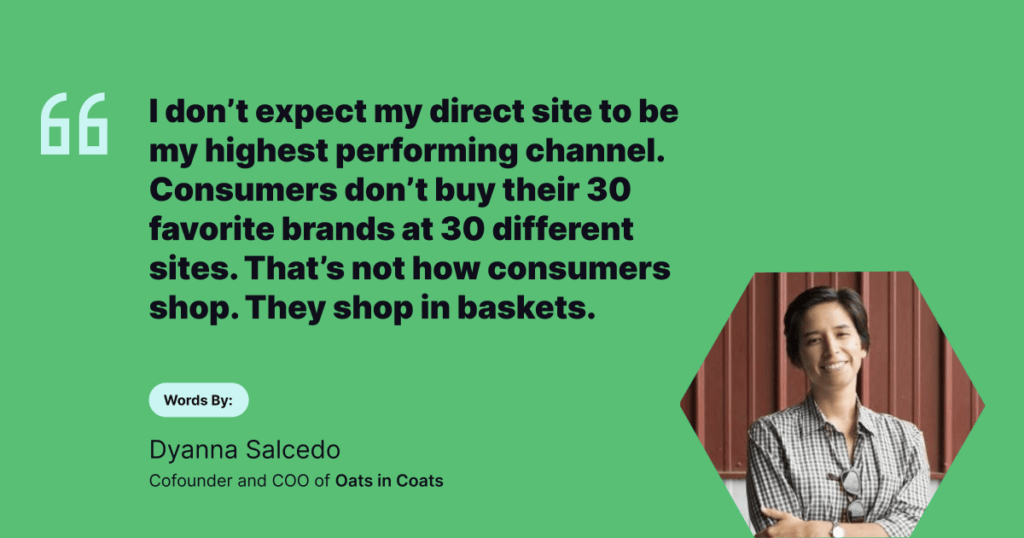
- ERetail is booming. There’s GoPuff, Fresh Direct, Amazon Fresh, and more. Brands need to be on these channels not just have one ecommerce site. According to Ellie Seta, Super Coffee’s senior eRetail Manager, 30 percent of the brand’s customers discover Super Coffee through a retail store. What about the remaining 70 perecnt? For the high-growth coffee startup, ecommerce fills its own need. There, the goal is to build loyalty and provide an additional benefit to the customer—
- outside of any typical engagement they get in-store.
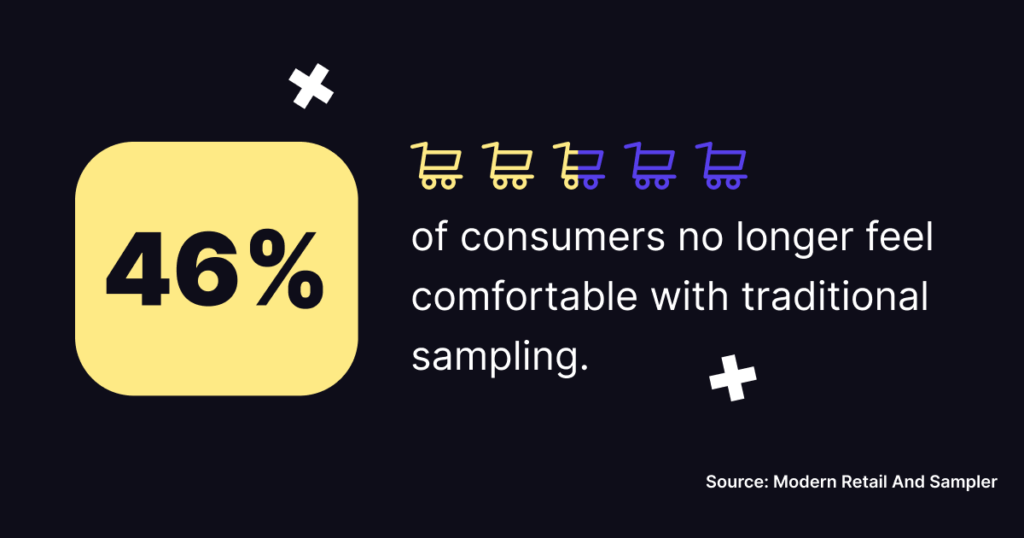
- Product sampling is key. But you have to know why you’re doing it in the first place and create a hypothesis to test before you get started. In-person sampling has had its fair share of ups and downs with the pandemic; however, it’s still a big conversion driver for today’s F&B brands. While many brands have shifted to online sampling programs, in-person sampling is a whole other ballgame. It provides a multitude of benefits and reaches a brand new audience. “People misunderstand product sampling. It’s about discovery. If you don’t have a hypothesis around why you’re doing what you’re doing, don’t sample.” – Ben Ponder, Cofounder and CEO of Ponder Foods.
Tydo provides comprehensive reports, data visualizations, and insights to optimize a brand’s ecommerce business.

